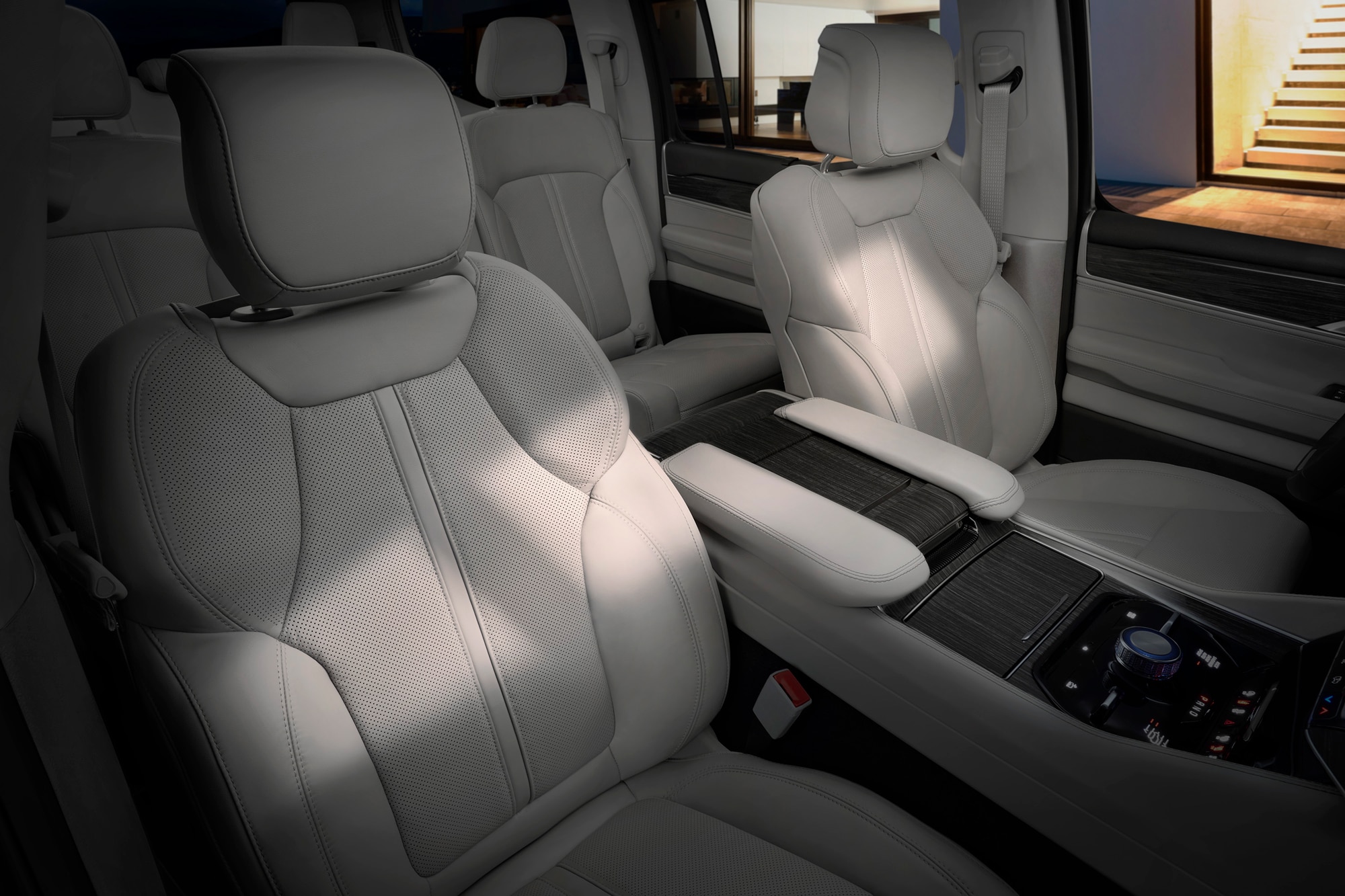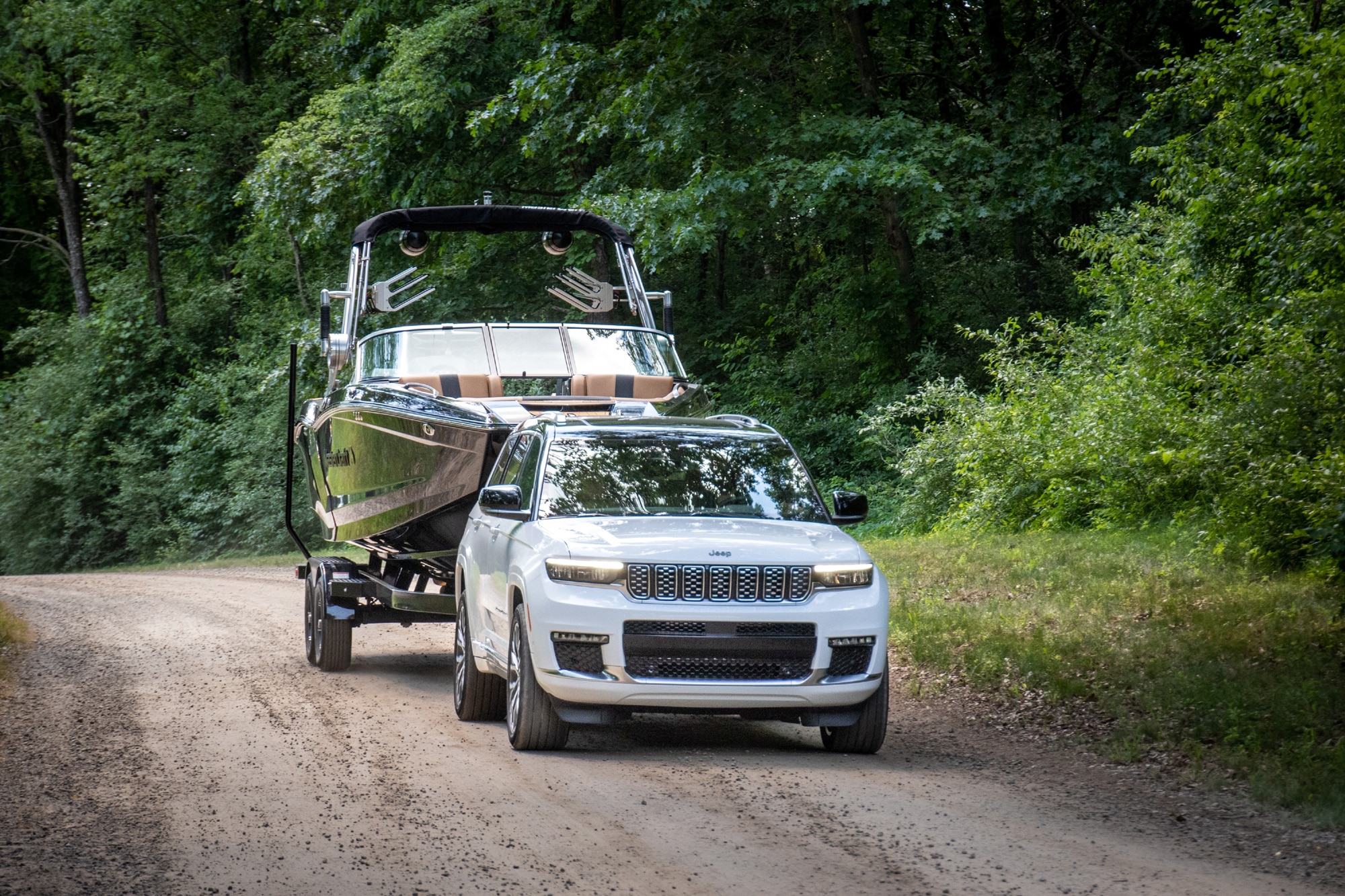Compared: 2022 Jeep Grand Cherokee L vs. 2022 Jeep Wagoneer
Jeep’s three-row SUVs can handle families both large and larger.
 Jeep
Jeep
After nearly a decade’s absence from the three-row SUV segment, Jeep is giving buyers who travel with a crew multiple options. The Jeep Grand Cherokee L adds 5 inches to the wheelbase of the popular mid-size Grand Cherokee to make room for its extra row of accommodations, while the Jeep Wagoneer borrows its bones from the Ram full-size pickup to provide a beefier take on family transportation, (the ultra luxury Grand Wagoneer, which upgrades the Wagoneer with lavish interior trimmings and starts above $88,000, isn’t covered in this article).
Despite sharing a showroom, both of these Jeeps provide a unique take on transporting the entire family. Let’s dive into how the Grand Cherokee L and the Wagoneer compare when examining price, interior design, and towing capabilities.
Jeep Grand Cherokee L vs. Jeep Wagoneer: Price
The Jeep Grand Cherokee L features no fewer than six trim levels, stretching from the affordable Laredo at about $42,000 all the way up to the luxurious Summit Reserve $69,000.
The Jeep Wagoneer, on the other hand, starts at nearly $19,000 more, with the entry-level Series I Wagoneer retailing at around $61,000 and the range-topping Series III checking in at around $77,000. That extra cash pays for a considerably larger body-on-frame platform better suited for towing and hauling than the Grand Cherokee L’s unibody design, and a standard V8 engine, similar to the optional eight-cylinder found in the Grand Cherokee L.
 Jeep | Wagoneer
Jeep | Wagoneer
Jeep Grand Cherokee L vs. Jeep Wagoneer: Interior
With a longer wheelbase than the standard Jeep Grand Cherokee and a stretch of 11.4 inches in overall length, the L provides a kid-friendly third row of seating, plus an extra inch of legroom for those riding in the second set of accommodations. Total cargo space checks in at just under 85 cu.-ft., with 17 cubes available between the third row and the hatch when carrying a full load of passengers. Six-passenger (with second-row captain’s chairs) and seven-passenger (with a middle bench) configurations are available.
The Jeep Wagoneer is bigger in every dimension than the Grand Cherokee L, which means a spacious middle bench plus a third row that can comfortably transport adults. Eight-passenger seating is standard, thanks to the vehicle’s extra width (allowing three passengers across at the back) but captain’s chairs can be swapped in for middle riders, dropping capacity to seven people. Cargo space is a generous 117 cu.-ft. in total, with 27 cu.-ft. available between the back seat and the cargo door.
It’s worth noting that even the base Wagoneer Series I feels more upscale inside than all but the priciest Grand Cherokee L trims, thanks to the use of high-end materials and eye-catching design details.
 Jeep | Grand Cherokee L
Jeep | Grand Cherokee L
Jeep Grand Cherokee L vs. Jeep Wagoneer: Towing
The base rear-wheel drive Jeep Grand Cherokee L, which is equipped with a 293 hp V6 engine, is rated to tow 6,200 lbs. With the option of both four-wheel drive and a 357 hp V8 installed, that figure rises to 7,200 lbs.
The Jeep Wagoneer comes standard with a similar 5.7L V8 under its hood, tuned to provide 392 hp and 404 lb.-ft. of torque. For both RWD and 4WD editions, that helps give the Wagoneer a towing capacity of 10,000 lbs., handily beating its smaller sibling.
Written by humans.
Edited by humans.
 Benjamin Hunting
Benjamin HuntingBenjamin Hunting is a writer and podcast host who contributes to a number of newspapers, automotive magazines, and online publications. More than a decade into his career, he enjoys keeping the shiny side up during track days and always has one too many classic vehicle projects partially disassembled in his garage at any given time. Remember, if it's not leaking, it's probably empty.
Related articles
View more related articles